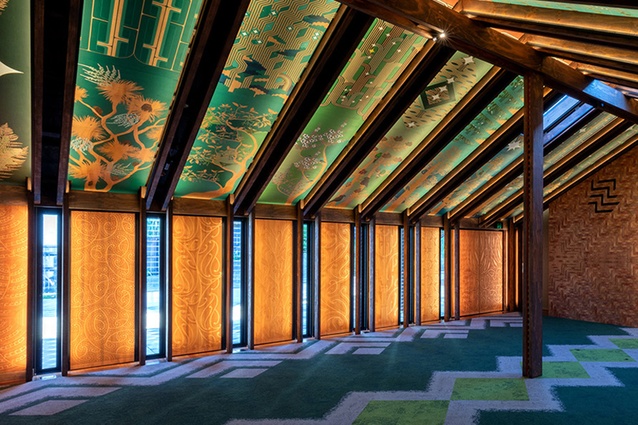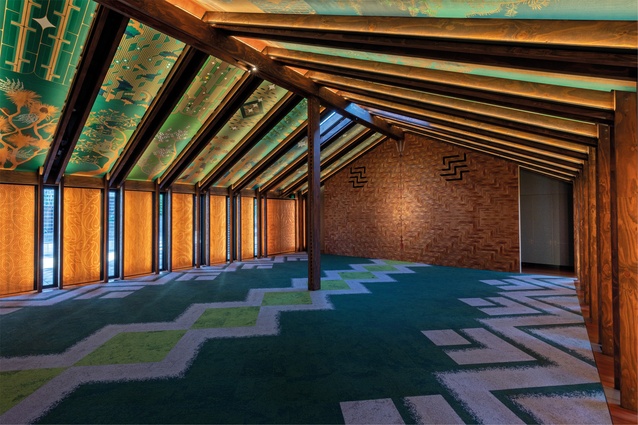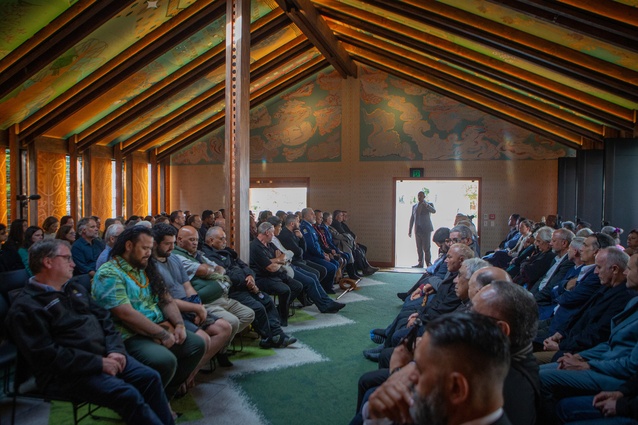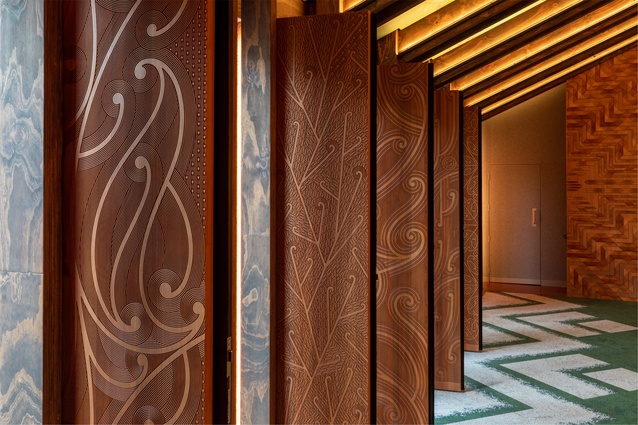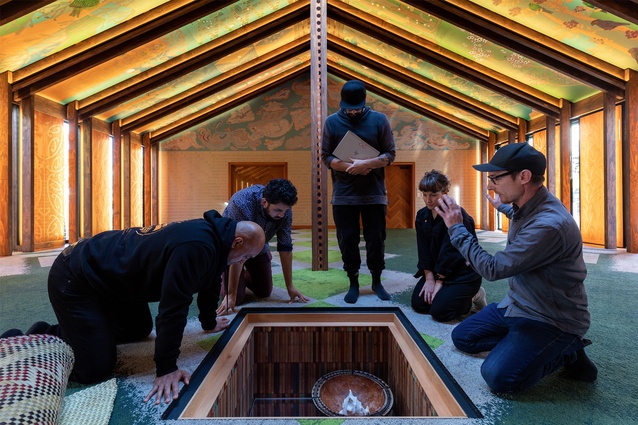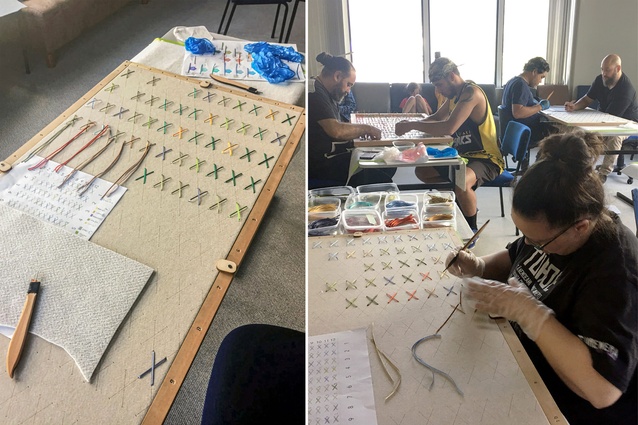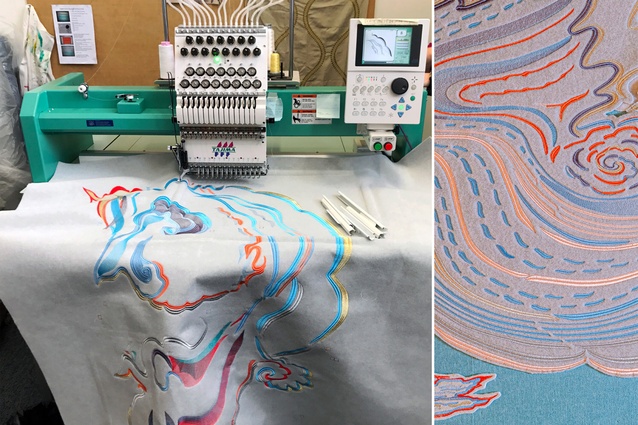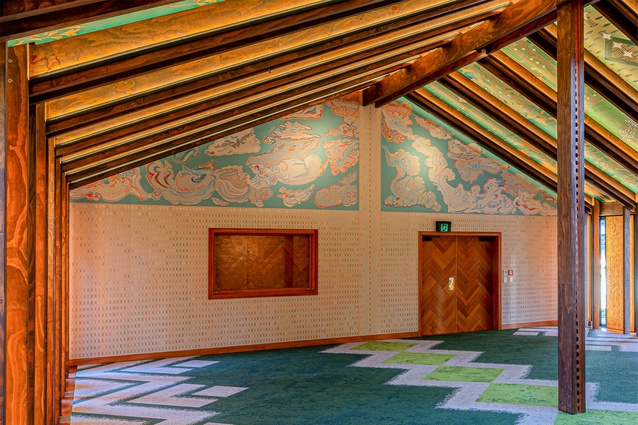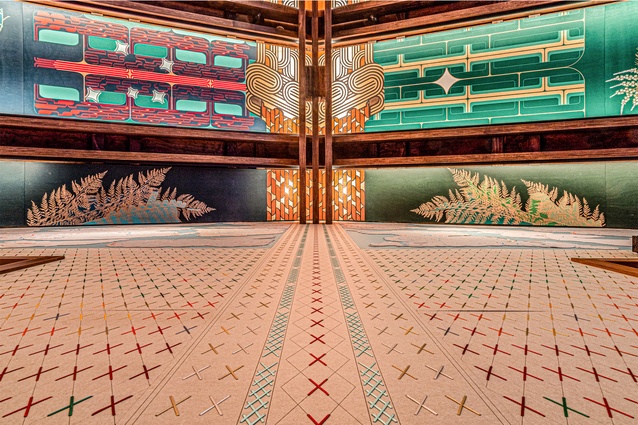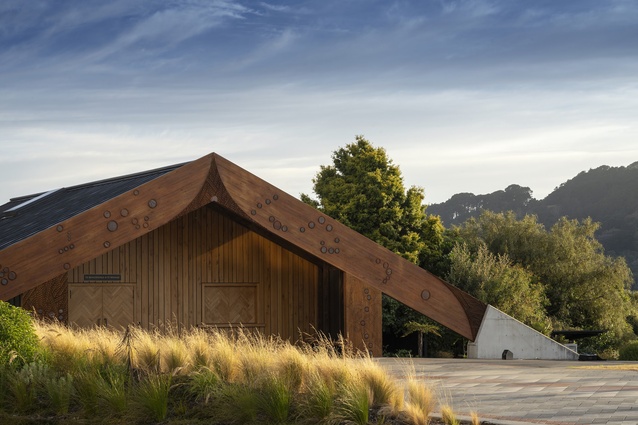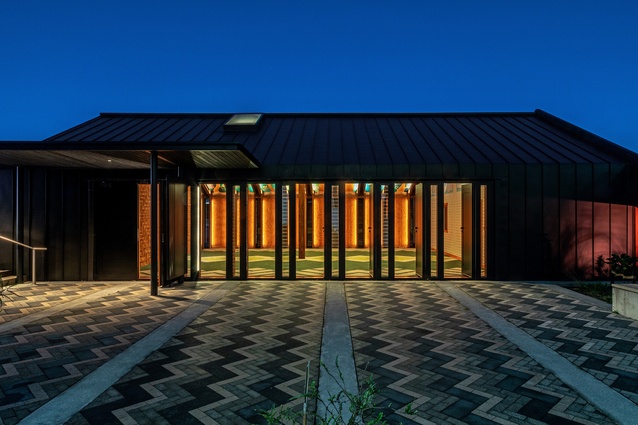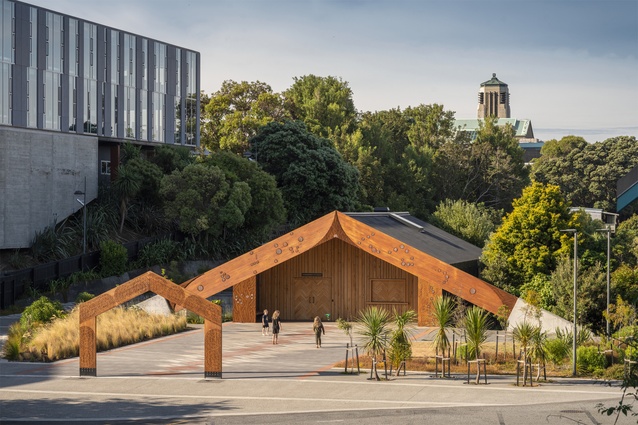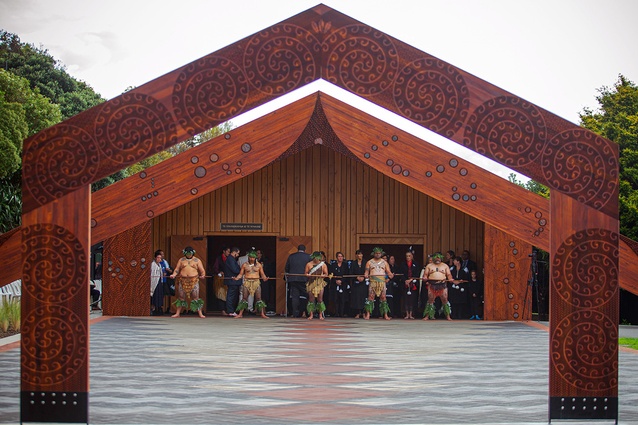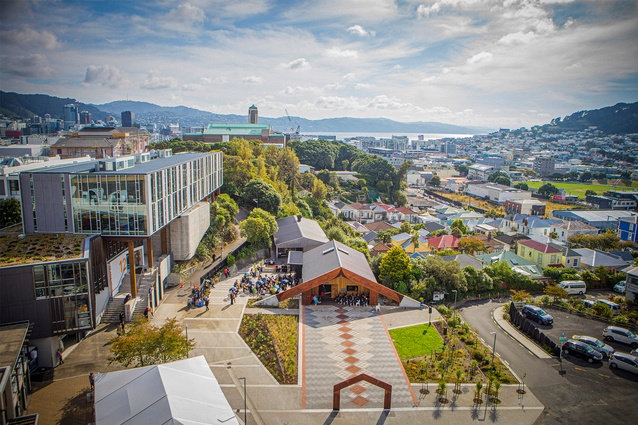Interior Awards 2022, Supreme and Civic Award Winner
Congratulations to this year's Supreme Award winner (Civic category) - Te Rau Karamu Marae, Massey University by Te Kāhoi Toi and Athfield Architects.
The jury’s comment:
“Te Rau Karamu Marae is the architectural and cultural embodiment of mana, commanding in presence in the central city of Pōneke Wellington. An incredible offering to students, whānau and the wider hapori, this whare gives rise to the modern world of architecture while still portraying and acknowledging its unwavering foundations in te ao Māori. Embracing modern technology in its form and materiality and, at the same time, staying steadfast to tikanga, this project is an exemplar of what the pinnacle of civic buildings needs to deliver in Aotearoa in 2022 and beyond. It is a story of community and collaboration, and a layering of art, architecture, culture, history and heart. From the physical connection of Te Rua below to Te Rakau Tipua (The Cosmic Tree) and the star constellations above, te ao Maori narratives are embedded throughout the space and its highly crafted detailing. Full credit to the design team and all the whānau behind the scenes who were involved in the creation of this magnificent project.”
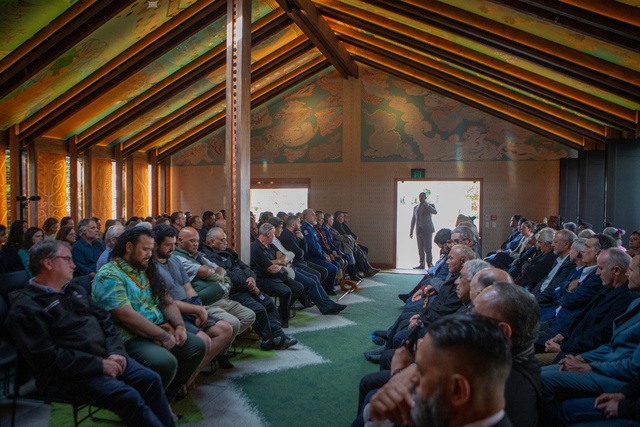
PROJECT DETAILS:
Location: Wellington
Client: Massey University Wellington
Building area (m2): 175m2 GFA: Te Whaioranga o Te Whaio wharenui 207m2; GFA: Te Whaioranga o Te Taiao wharekai 900m2; GFA: Te Rau Karamu atea and associated landscape.
Project brief: The brief was to create a new marae central to the campus to welcome students and guests, host wānanga, uphold the mana of tangata whenua, and further Massey’s aspiration to be a Tiriti-led university.
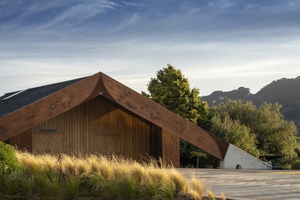
“The spatial approach was to integrate the matauranga held within, and support learning, creativity and wellbeing. Within Te Whaioranga o Te Whaio interior, timber elements are clearly articulated to support and form an integral part of the spatial narrative, representing Te Rakau Tipua — The cosmic tree. The ridge pole and rafters, representing the trunk and branches, are supported by the central poutokomanawa and totara poupou wall panels. Eight of these poupou become doorways opening out to Nga Kuratinitini o Te Ao courtyard. Skylights and glass louvre apertures refract the changing light to create calm but lively dappled light effects enhancing the feeling of being within a forest glade.” - Ari Stevens
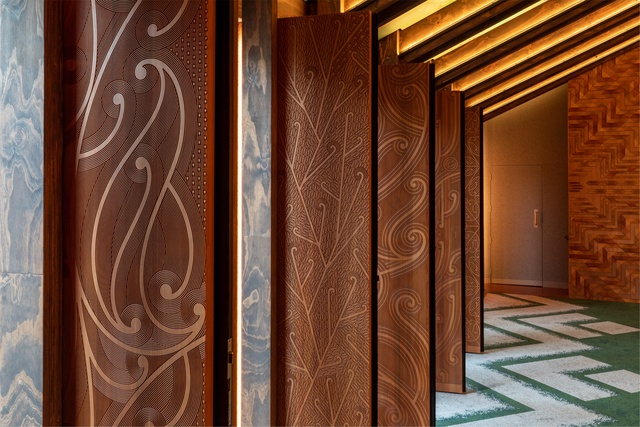
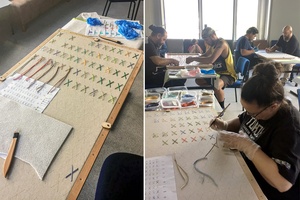
Credits:
- Design - Te Kāhui Toi and Athfield Architects
- Te Kāhui Toi artist-designers - Ngataiharuru Taepa, Kura Puke, Hemi Macgregor, Saffronn Te Ratana, Stuart Foster, Wi Taepa, Israel Birch, Robert Jahnke, Maihi Potaka, and Te Kahui Toi whanau whanui.
- Ross Hemera - Artist-designer, Massey University
- Athfield Architects team - John Hardwick Smith, Nick Mouat, Ari Stevens, Chris Winwood, Miriam Barnett, Kim Salt
Watch the finalist’s presentation here:
With thanks to our Interior Awards 2022 sponsors. Find out more about each of our sponsors here.


